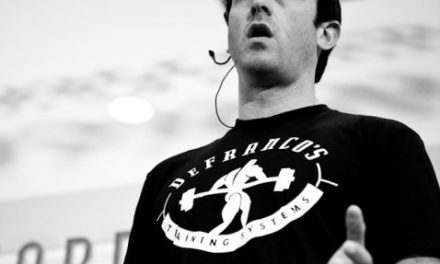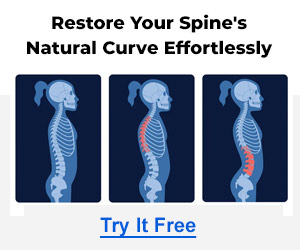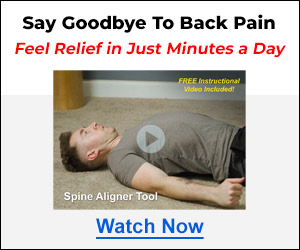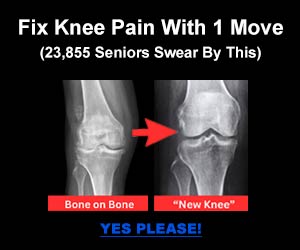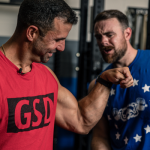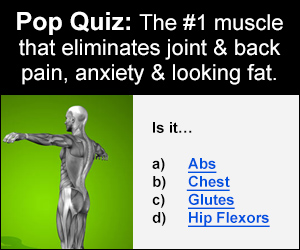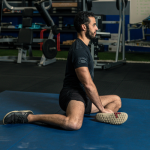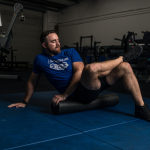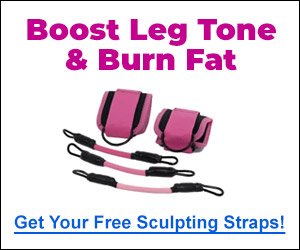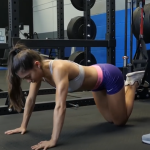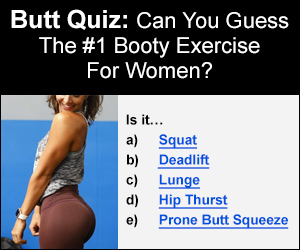Can doing hundreds of crunches really melt away your belly fat?
The idea of spot reduction, or losing fat from specific areas by targeting them with exercises, has been around for years. But is it fact or fiction?
In this post, we’ll explore the concept of spot reduction, delve into the science behind fat loss, and provide you with effective strategies to shed unwanted fat.
Curious to find out the truth? Keep reading.

What is Spot Reduction?
Spot reduction is the idea that you can reduce fat in specific areas of your body by targeting those areas with exercises.
Think you can burn off belly fat by doing a ton of crunches?
Or slim down your thighs with leg lifts?
Sorry to break it to you, but it doesn’t work that way.
Spot reduction suggests that working out a particular part of your body will selectively burn the fat stored in that area.
It’s a nice thought, but it’s not backed by science.
Where Did this Idea Come From?
Fitness magazines, infomercials, and workout routines have been pushing the spot reduction myth for decades.
Those early fitness programs loved to showcase models with toned abs or slim thighs, claiming their results came from specific exercises targeting those areas.
It made people believe spot reduction was not just possible, but an effective fat loss strategy.
The simplicity of the idea makes it appealing—work out a specific area to lose fat there.
Who wouldn’t want a quick fix?
But this desire for targeted solutions often overshadows the reality that effective fitness plans require overall lifestyle changes.
Spot reduction became ingrained in popular fitness culture, leading many to chase unrealistic results through spot-specific exercises alone.
Let’s get real: if you want to lose fat, you need to focus on overall fat loss strategies, not just hammering away at one body part.

The Science Behind Fat Loss
Alright, let’s cut through the nonsense and get to the facts.
If you want to lose fat, it all comes down to one simple principle: caloric deficit.
This means you need to burn more calories than you consume. [1]
When your body is in a caloric deficit, it taps into stored fat for energy, leading to fat loss.
But here’s the kicker—your body doesn’t pull fat from the specific areas you’re working out.
It’s a whole-body process.
So, doing a million crunches isn’t going to burn just belly fat; it’s going to help burn fat from all over your body.
The Role of Your Genes
Now, here’s something most people don’t realize:
Your genetics play a huge role in determining where you lose fat first.
Some people might lose fat from their face or arms before they see any change in their belly or thighs.
This is why you see different results for different people even if they’re following the same workout and diet plan.
It’s your body’s unique blueprint that dictates fat distribution and loss patterns.
Understanding this can save you a lot of frustration when you don’t see immediate results in your problem areas.
What Does the Science Say?
Numerous studies have debunked the myth of spot reduction.
Studies show that targeted resistance training exercises do not lead to localized fat loss in the selected areas.
Instead, study participants lost fat evenly across their bodies. [2]
The most effective way to lose fat is through a combination of a balanced diet, cardio, and full-body strength training.
So, if you’re spending all your time on isolation exercises hoping to see that six-pack, you’re missing the bigger picture.
Focus on comprehensive workouts that increase your overall calorie burn and build lean muscle mass.
That’s the real formula for fat loss.

Effective Fat Loss Strategies
Alright, enough with the myths. Let’s talk about what actually works for fat loss.
If you want to shed those extra pounds and reveal the muscle underneath, you need a game plan that’s based on science, not hype.
Here’s the real deal on how to get it done: a balanced diet, full-body workouts, cardio, and strength training.
This is the blueprint for getting lean and staying that way.

Balanced Diet
First things first: you can’t out-train a bad diet.
To effectively burn fat, you need to consume fewer calories than your body uses, creating an energy deficit.
This doesn’t mean starving yourself; it means eating smart.
Focus on whole foods—lean proteins, veggies, fruits, and healthy fats.
Ditch the junk food and sugary drinks. They’re just empty calories that sabotage your progress.
Remember, abs are made in the kitchen.

Full-Body Workouts
Next up, full-body workouts. These are your best friend when it comes to fat loss.
Why?
Because they torch calories.
Exercises like squats, deadlifts, and push-ups engage multiple muscle groups at once, making your workouts more efficient and effective.
Plus, they build lean muscle mass, which brings us to our next point.

Cardiovascular Exercise
Cardio is crucial for burning calories and shedding body fat.
Whether it’s running, cycling, or HIIT, find something you enjoy and stick with it.
Cardio helps create that caloric deficit we talked about.
Aim for a mix of steady-state cardio and high-intensity intervals to keep things interesting and maximize fat burn.

Strength Training
Building muscle isn’t just for bodybuilders.
More muscle means a higher resting metabolic rate, which means you burn more calories even when you’re not working out.
Incorporate compound movements and lift heavy to build muscle mass.
Strength training doesn’t just shape your body; it cranks up your metabolism, helping you lose fat more effectively.

Sustainable Fitness Practices
Fitness isn’t about quick fixes or overnight transformations.
It’s about creating habits that you can stick with for life.
If you want lasting results, you need to focus on consistency, set realistic goals, and adopt a long-term mindset.
This isn’t just about looking good; it’s about feeling good and staying healthy for the long haul.
Here’s how to make your fitness journey sustainable and effective.
Consistency
Consistency is the secret sauce of fitness success.
You can’t expect to see results if you’re only putting in effort once in a while.
Regular exercise and healthy eating need to become part of your daily routine.
It’s the small, consistent actions that add up to big changes over time.
Skip the all-or-nothing mentality—focus on making steady progress, and don’t get discouraged by setbacks.
Realistic Goals
Set goals that are challenging yet achievable.
If you aim for unrealistic targets, you’re setting yourself up for frustration and burnout.
Instead, focus on goals that promote overall health and well-being, not just aesthetics.
Whether it’s improving your strength, increasing your endurance, or simply feeling more energetic, make sure your goals are realistic and aligned with your long-term vision of health.
Long-Term Mindset
Fitness is a marathon, not a sprint.
Adopt a long-term mindset that prioritizes sustainable habits over quick fixes.
Quick results might be tempting, but they’re often short-lived and can lead to unhealthy practices.
Embrace a balanced approach that you can maintain for life.
Remember, the goal is not just to lose weight or build muscle, but to create a healthier, happier you for the long haul.

Wrap-Up
So, does spot reduction really work?
The evidence is clear: it’s fiction.
Despite what you might have seen in fitness magazines or infomercials, you can’t selectively burn fat from specific areas of your body through targeted exercises.
Fat loss happens through a whole-body process driven by a caloric deficit, and where you lose fat first is largely determined by your genetics.
The good news is that you can achieve effective and sustainable fat loss by focusing on proven strategies.
Prioritize a balanced diet, engage in full-body workouts, incorporate cardiovascular exercise, and build lean muscle through strength training.
Consistency is key, and setting realistic goals while maintaining a long-term mindset will keep you on track.
Forget the myths and focus on what really works.
References
Human Movement
Ramirez-Campillo, Rodrigo & Andrade, David & Clemente, Filipe & Afonso, José & Pérez Castilla, Alejandro & Gentil, Paulo. (2022). A proposed model to test the hypothesis of exercise-induced localized fat reduction (spot reduction), including a systematic review with meta-analysis. Human Movement. 23. 1-14. 10.5114/hm.2022.110373.

